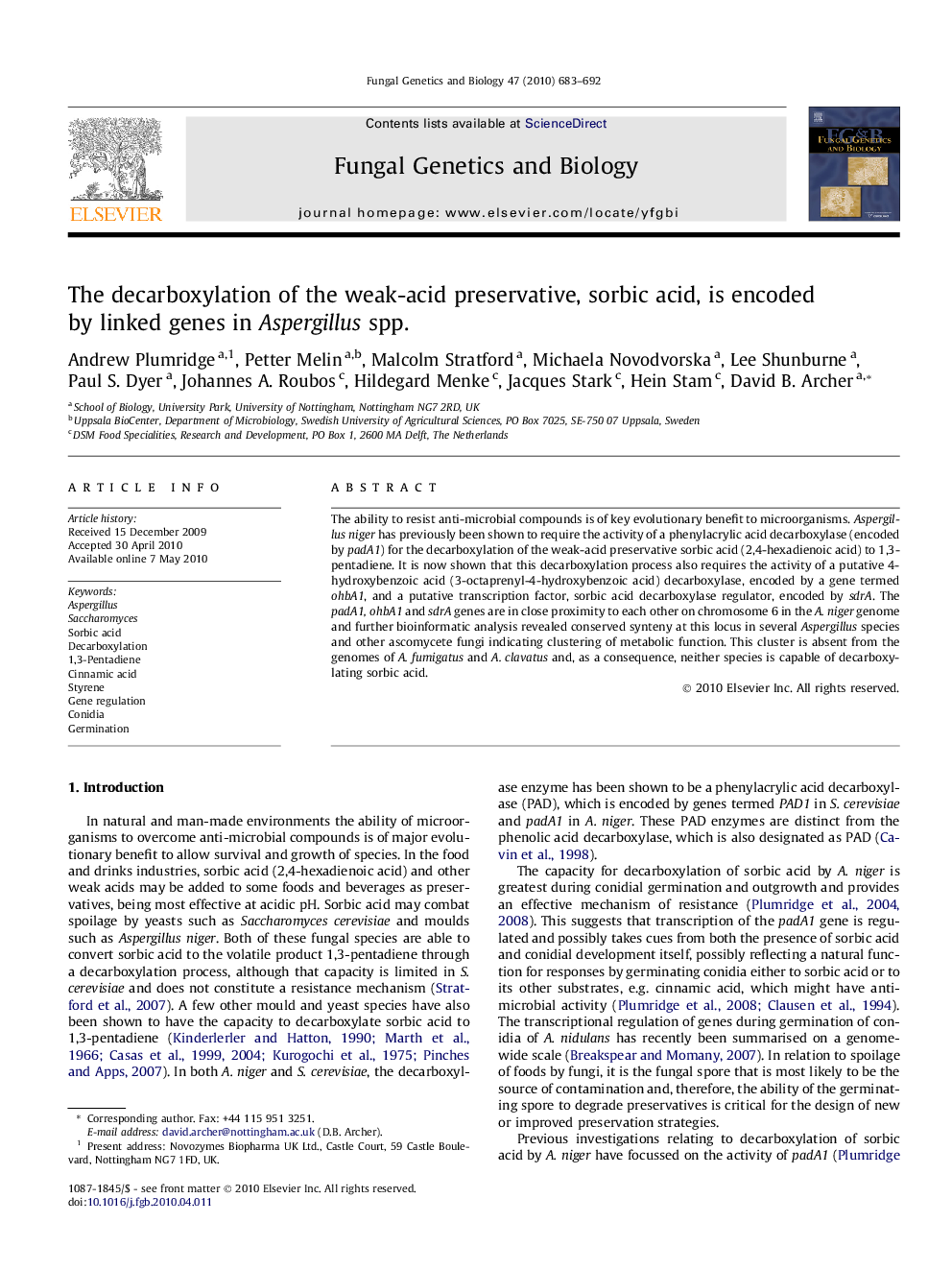| Article ID | Journal | Published Year | Pages | File Type |
|---|---|---|---|---|
| 2181028 | Fungal Genetics and Biology | 2010 | 10 Pages |
The ability to resist anti-microbial compounds is of key evolutionary benefit to microorganisms. Aspergillus niger has previously been shown to require the activity of a phenylacrylic acid decarboxylase (encoded by padA1) for the decarboxylation of the weak-acid preservative sorbic acid (2,4-hexadienoic acid) to 1,3-pentadiene. It is now shown that this decarboxylation process also requires the activity of a putative 4-hydroxybenzoic acid (3-octaprenyl-4-hydroxybenzoic acid) decarboxylase, encoded by a gene termed ohbA1, and a putative transcription factor, sorbic acid decarboxylase regulator, encoded by sdrA. The padA1,ohbA1 and sdrA genes are in close proximity to each other on chromosome 6 in the A. niger genome and further bioinformatic analysis revealed conserved synteny at this locus in several Aspergillus species and other ascomycete fungi indicating clustering of metabolic function. This cluster is absent from the genomes of A. fumigatus and A. clavatus and, as a consequence, neither species is capable of decarboxylating sorbic acid.
